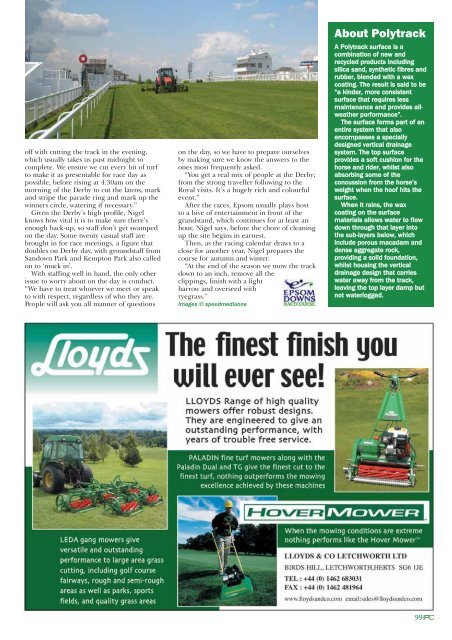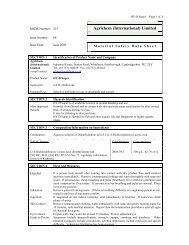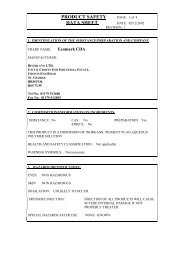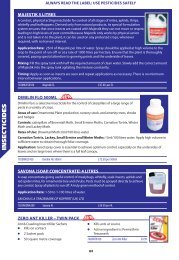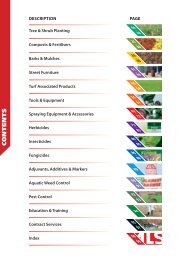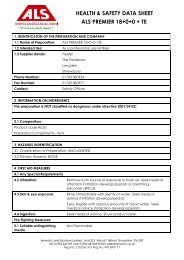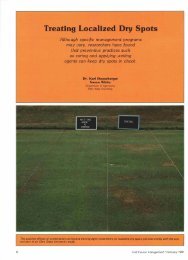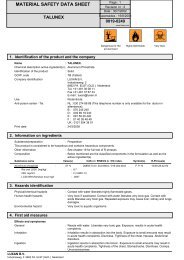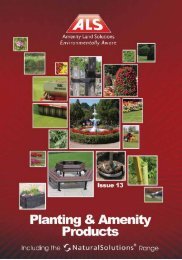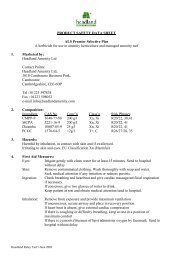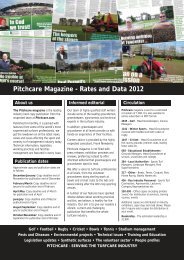Earning his Spurs - Pitchcare
Earning his Spurs - Pitchcare
Earning his Spurs - Pitchcare
You also want an ePaper? Increase the reach of your titles
YUMPU automatically turns print PDFs into web optimized ePapers that Google loves.
off with cutting the track in the evening,<br />
which usually takes us past midnight to<br />
complete. We ensure we cut every bit of turf<br />
to make it as presentable for race day as<br />
possible, before rising at 4.30am on the<br />
morning of the Derby to cut the lawns, mark<br />
and stripe the parade ring and mark up the<br />
winners circle, watering if necessary.”<br />
Given the Derby’s high profile, Nigel<br />
knows how vital it is to make sure there’s<br />
enough back-up, so staff don’t get swamped<br />
on the day. Some twenty casual staff are<br />
brought in for race meetings, a figure that<br />
doubles on Derby day, with groundstaff from<br />
Sandown Park and Kempton Park also called<br />
on to ‘muck in’.<br />
With staffing well in hand, the only other<br />
issue to worry about on the day is conduct.<br />
“We have to treat whoever we meet or speak<br />
to with respect, regardless of who they are.<br />
People will ask you all manner of questions<br />
on the day, so we have to prepare ourselves<br />
by making sure we know the answers to the<br />
ones most frequently asked.<br />
“You get a real mix of people at the Derby;<br />
from the strong traveller following to the<br />
Royal visits. It’s a hugely rich and colourful<br />
event.”<br />
After the races, Epsom usually plays host<br />
to a hive of entertainment in front of the<br />
grandstand, which continues for at least an<br />
hour, Nigel says, before the chore of cleaning<br />
up the site begins in earnest.<br />
Then, as the racing calendar draws to a<br />
close for another year, Nigel prepares the<br />
course for autumn and winter.<br />
“At the end of the season we mow the track<br />
down to an inch, remove all the<br />
clippings, finish with a light<br />
harrow and overseed with<br />
ryegrass.”<br />
Images © speedmediaone<br />
About Polytrack<br />
A Polytrack surface is a<br />
combination of new and<br />
recycled products including<br />
silica sand, synthetic fibres and<br />
rubber, blended with a wax<br />
coating. The result is said to be<br />
“a kinder, more consistent<br />
surface that requires less<br />
maintenance and provides allweather<br />
performance”.<br />
The surface forms part of an<br />
entire system that also<br />
encompasses a specially<br />
designed vertical drainage<br />
system. The top surface<br />
provides a soft cushion for the<br />
horse and rider, whilst also<br />
absorbing some of the<br />
concussion from the horse’s<br />
weight when the hoof hits the<br />
surface.<br />
When it rains, the wax<br />
coating on the surface<br />
materials allows water to flow<br />
down through that layer into<br />
the sub-layers below, which<br />
include porous macadam and<br />
dense aggregate rock,<br />
providing a solid foundation,<br />
whilst housing the vertical<br />
drainage design that carries<br />
water away from the track,<br />
leaving the top layer damp but<br />
not waterlogged.<br />
99


